Author: Sven Olson
The costs associated with replacing and upgrading older pumps in vintage power plants and process facilities have often been an obstacle for life extension programs or service change projects such as going for low sulfur fuel oils. However, when regulatory and operational demands make new construction hard to economically justify, it may be the only way to go.
When analyzing the total costs for upgrading and/or renewing pump installations, the pump component itself is not the roadblock but merely the modification of piping and foundations including installation and commissioning. These costs have shown a significant increase due to absence of skilled labor and the necessity to rely on third-party installation and service contractors.
It is especially challenging when the original pump is no longer available and replacement parts become excessively expensive with long lead times. The original manufacturer could have ceased production of a certain model and replaced it with a new one that does not fit the existing footprint. Also, the manufacturer could have been acquired or reorganized and nobody knows how to trace the original pump.
This article will focus on re-engineered pumps, which are not the same as re-manufactured pumps. A re-engineered pump is a newly built pump. A re-manufactured pump is an older pump that has been upgraded, modified or repaired to extend its service life or for a modified service.
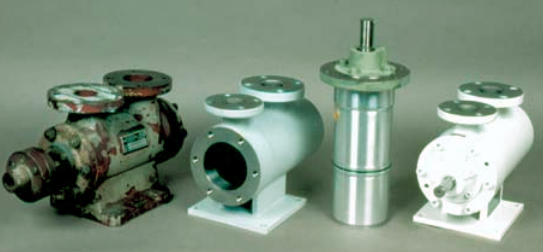
Replacement of a governor oil pump at a California steam plant
A re-engineered pump is custom-built in order to avoid modifying the existing installation configuration. Instead, the original pump suction and discharge pipe location, with insulation and instrumentation including the original electric motor and mounting, is kept. It will closely fit the envelope of the original pump including pump base, nozzles and drive shaft, which also help to keep the installation time to a minimum. As a result, the re-engineered pump will lower the total costs of replacing or upgrading a pump and positively impact the lead time in a pump replacement project.
The most commonly re-engineered pump is the three-screw pump. It belongs to the positive displacement (PD) pump family and is known for its good suction lift along with handling viscous liquids and for low pulsations, noise and vibration. The pump flow rate is directly proportional to the speed and can be controlled using a variable speed drive (VSD), which is often a good way to reduce power demand as flow requirements vary.
With internal hydraulic rotor balancing, the thrust load is compensated without using thrust bearings or thrust plates. Used with lubricant, fuel or hydraulic oils, the service life of these pumps is very long when operating at high pressure. It is a self-priming design,
which can tolerate oils with air entrainment without risking flow loss and vapor locking. The design is simple with few moving parts and therefore easy to operate
and maintain.
Re-engineered pumps are built around a standard pump element, called a cartridge, which is installed in a fabricated external pump casing. The cartridge is sized for the actual hydraulic data of the installation and separately tested to these conditions in the factory. The casing, mostly made in fabricated steel, allows for almost infinite variations of nozzle locations and location of the mounting feet. The casing designer, who is assisted by a computer-aided design (CAD) system, can import dimensions and configurations of the existing pump and apply these to a new design, resulting in a customized casing to fit the old installation.
The casing can also be equipped with a pressure relief valve as shown in Image 3, which is an advantage when the old installation had a separate relief valve. Providing a relief valve integral to the pump can prevent expensive piping modifications if its function is questionable or if the operating data has been modified.
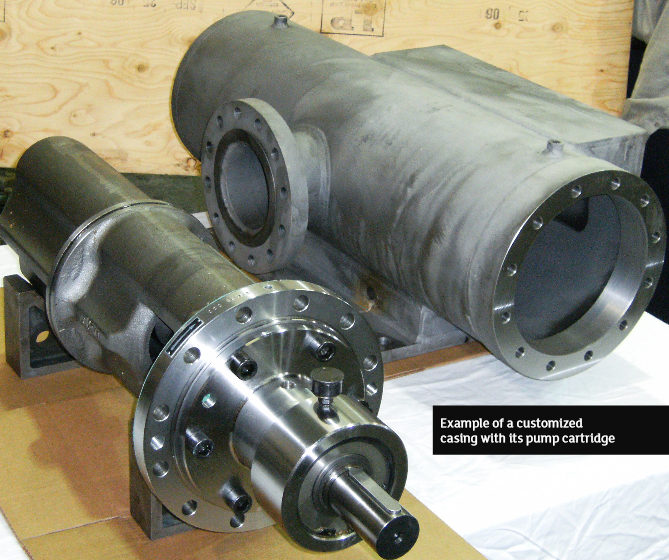
There are many opportunities to use re-engineered pumps in power plants. Typically tied to mineral oil transfer or pressure boosting, examples from the past include fuel oil transfer and injection for boilers and gas turbines, hydraulic governor oil for steam and water turbines and—most frequently—as lubrication oil pumps for engines, reduction gears and other rotating machinery. The original pump can be another PD pump like a gear, vane or screw pump.
However, centrifugal pumps have also been replaced when changes in the fluid characteristics like viscosity changes or air entrainment are outside the operating window of the centrifugal pump. The liquids that the re-engineered pumps handle include fuel oils from distillate to No. 6, lube and hydraulic oils and, in some cases, palm oil and water-based hydraulic fluids.

Re-engineered pump with integral pressure relief valve
Re-engineered pumps can also be an option to replace centrifugal pumps. When it is incorrectly applied or when the initial fluid and flow conditions have changed, the screw pump can be the right alternative for new conditions. In one case, a vertical centrifugal lube oil pump serving a large reduction gear had difficulties maintaining the required oil pressure when foam and air was present in the oil.
A re-engineered pump was designed to match the dimensions and nozzle location of the original centrifugal pump and could be dropped in the original lube oil tank without any
modifications. The original centrifugal pump did not require a pressure relief valve, so an external relief valve was added and installed on the pump mounting plate connecting back
to the tank. The pump design did not interfere with existing structures or expand outside the original pump dimensional envelope.
A recent development includes re-engineered pumps for nuclear power plants including the special certification required for such installations. In particular, lube oil pumps for emergency and stand-by diesel engines have been of interest, as the original lube oil pumps are no longer manufactured.
Interested in Re-Engineered Pumps? Click here to submit an inquiry!
Re-engineered pumps can be tailored for a special service or duty that was not planned when the pump was initially purchased. The flexibility of the cartridge design allows for
the pump to adapt and perform many new tasks. In one example, the original pump was designed for very low suction pressure and very viscous fluids similar to grease. But the suction line was a restriction, and the pump never worked as intended. The new re-engineered pump was modified to bolt right onto the suction box of the holding tank. The axial inlet was enlarged and a modification to the rotor liner allowed the pump screws to work like augers pulling the fluid into the pump suction.
The pump cartridge, which is a standard component, is kept in the manufacturer’s facilities. The rotors are hardened and finish ground in carbon steel, and the rotor liners are in cast or ductile iron. As standard, the pumps come equipped with mechanical seals. The pump casing is designed and manufactured locally, and the final assembly, inspection and quality control take place at the manufacturer’s facility. If necessary, additional pipe spools with flanges and instrument tabs can be provided. Shims or a pump soleplate can be offered in order to maintain shaft height and allow coupling with an existing motor.

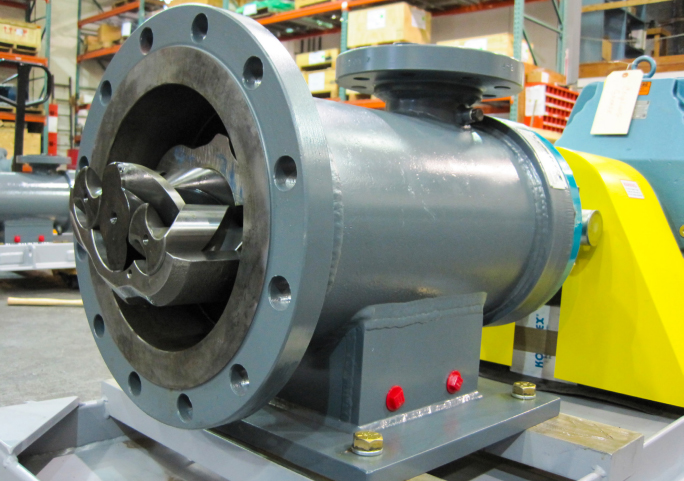
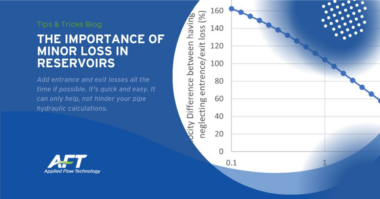
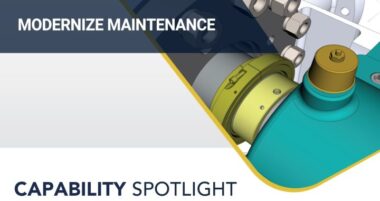
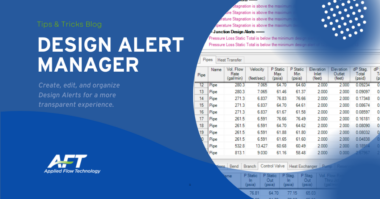
Comments